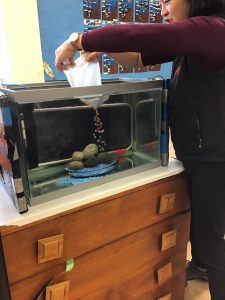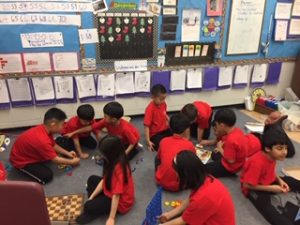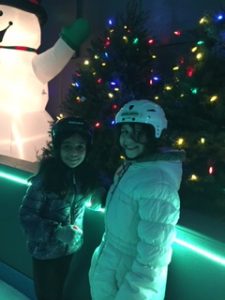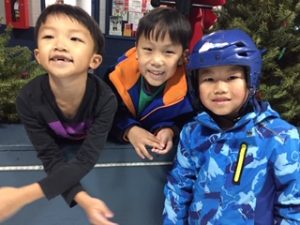Click here for the shape of the day.
Click on this link to find your instructions for the day.
Our new theme for this term is Castles. Despite our distant circumstances, I hope we will get to enjoy our castle theme just as much as our pirate theme. We will explore the theme through our class novel, other books on Epic, art, applied design, and even math (castles are made of cylinders, cones, and rectangular prisms, after all). Castles, dragons, knights, horses, kings, queens, princesses and princes! Let the fun begin!
Parents, you can help by starting to save small boxes, and toilet paper/paper towel rolls for an eventual building project. Can you guess what it might be? Empty boxes from granola bars, soap bars, and even some smaller cereal boxes work really well. You have about a month to collect as our building project will start the first or second week of May.
Click here for the Shape of the Day
Click here for the link on how to draw a dragon (some students requested to have this again)
Dear Div. 5 Students and Families,
Even as I chose the title for this blog post, I found myself second-guessing its tone. Indeed, I am thrilled to renew our connection as teacher, parents and student; however, I acknowledge this new connection will be renewed under subdued circumstances and without the warm immediacy of personal contact. Furthermore, I acknowledge that we are living with greater uncertainty and worries; that some of our family members may be far from us, and that we miss our friends, social groups, and routines.
We are, however, lucky to have so many ways in which to remotely communicate with each other, and we will undoubtedly continue to use old and familiar technology as well as discover many new ones as we create novel pathways of learning and connection. Lastly, I will also be sending this message out in an email to parents, and I will be reaching out with some questions and a request for some additional information. Please know that Parkcrest teachers have been reaching out to each other via virtual meetings and that we will continue to communicate our plans as we define them more concretely throughout this week and future weeks to come.
Salmonid Program:
I know you are all wondering about our alevin. Throughout Spring Break, I received regular communication from the Salmonid Program office. There were long email threads between participating teachers as to what to do about the salmon. I knew that our custodian, Mr. Harsch, would only have our school open until Wednesday of last week, and at that time I worried that we would not be let in to our schools for a long time following. So, on Tuesday, full of uncertainty about whether I was doing the right thing, I came in to do a salmon rescue. I am grateful I did, because on Saturday I received this email from Fisheries:
“Fisheries and Oceans Canada has developed the following guidelines to help teachers and school administrators make the best decisions regarding the rearing of salmon in classroom aquariums during these difficult times.
My son and daughter helped me a lot with emptying the tank and transporting the buckets with the alevin to Stoney Creek. Additionally, my sister, niece and nephew who are in Grade 1 and 2, came out to help Div. 5 imagine what it would have been like for your age group to be creek side. As you will see in the photos, we practiced social distancing by being 2 metres away from the kids, and they wore gloves to touch the buckets that my son and daughter had handled.
Mrs. Marto
(Photos would not upload today
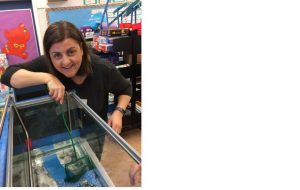
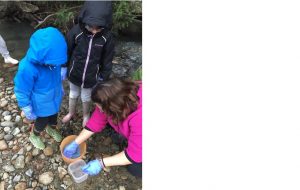
They are now free and beginning to explore the bottom of the tank area. They are not yet able to swim higher up the tank. They are feeding themselves from their orange yolk sac.
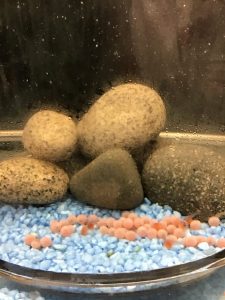
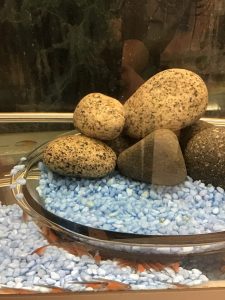
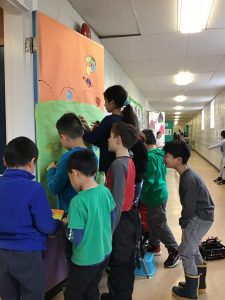
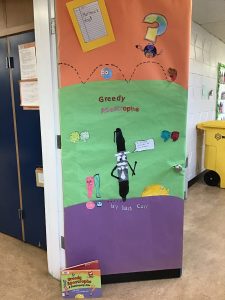
DOOR DECORATING EVENT
We didn’t win, but we had a lot of fun bringing this book to life on our door. It is a very funny book that has helped us to better understand the very difficult concept of when to use apostrophes. We also enjoyed watching the other classroom doors evolve throughout the week.
We held our own cooperative competition in class to challenge ourselves to more efficiently use our silent reading time and to set a goal of reading a short chapter book for the enjoyment of reading. We did it! It was a great week of engaged and attentive reading, and we will continue throughout next week to finish our chapter books. In the meantime, we’ll take full advantage of our extra P.E. period prize.
Thank you Div.5. parents and students for sharing in all the abundant activities of the week. Your participation was stellar!
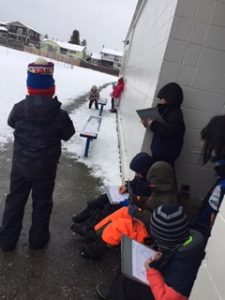
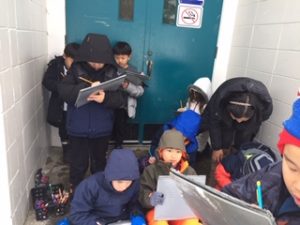
Living Things Have Lifecycles Adapted to Their Environment
The above curricular “Big Idea” has us out on a regular basis experiencing, asking questions, making observations and recording our local environment. The students always manage to surprise me. On this cold afternoon, they had already been out twice. I thought it would be a hard sell to get them into their snow gear again, and I was resigned to the possibility that the snow would provide a considerable distraction to the observation sheet I’d given them; however, they threw themselves into their work and reminded me, again, of the importance of spending time outdoors.
The crisp weather activated our senses, got us moving and got us thinking. On this day, we were once again looking at our surrounding landscape and the changes winter had brought. This year, we have done the same activity for each season that has come. In doing so, the students connect and continue to grow empathy for all living things and the hardships they must endure to survive. It is my hope that this connection grows responsibility and stewardship of the environment.
Of course, a job well done deserves a reward…
Some free time in the snow.
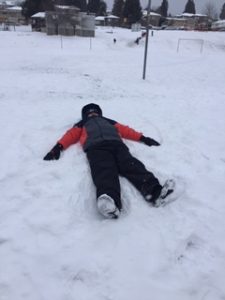
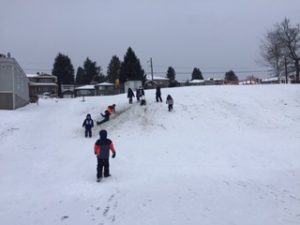
We are now adoptive parents of 55 chum salmon eggs that arrived on Monday from the Seymour Hatchery. The salmonid program is an ideal hands-on enrichment to our Science program. It pairs perfectly with our ongoing environmental studies on the Ocean (with Mrs. Rudolph’s/Glavas’ class), but it also serves as a provocation (an activity that stimulates ideas and connections) for Social Studies.
Through the salmonid program, we will explore some of the Big Ideas of the Social Studies Grade 3 curriculum such as looking at how the indigenous peoples of B.C. value the well-being of our land, and how the salmon connect us to indigenous knowledge, ways of life, and traditions that have been passed down through oral history. We will also continue to explore characteristics of coastal communities and, in conjunction with Mrs. Mar’s class, look at the Grade 2 curricular Big Ideas that ask us to explore how local actions can have global consequences and vice versa. We will continue to share out about our projects.
